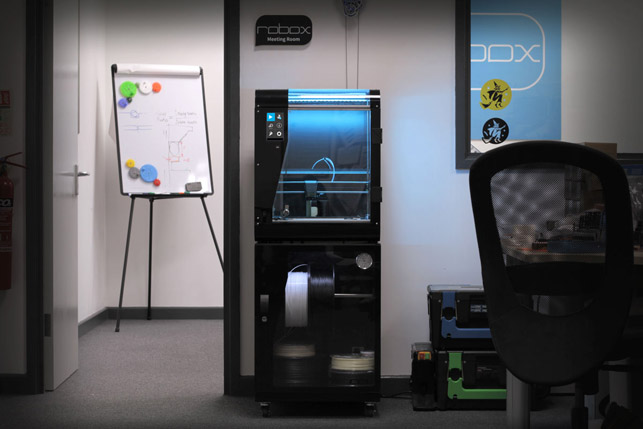Reshoring of production has boosted CEL-UK’s innovation and competitiveness, and may be a good option for other firms as Brexit takes effect, says MD Chris Elsworthy
Reshoring is a business strategy that more and more UK manufacturers have adopted over the last decade – but the trend seems to have gained momentum following the Brexit referendum.
Manufacturers of 3D printers are no exception. As CEL-UK’s experience shows, reshoring production presents an opportunity to boost innovation and competitiveness, even against the odds presented by Brexit. But how?
Before answering this question, we need to take a step back and look at what drove a company like CEL-UK to offshore production in the first place. Many consumer 3D printers grew from the open source community, and that self-build ethos is still apparent in the design and manufacture of many machines.
When CEL-UK first set up the Robox project in 2012, however, we wanted to step away from the open source community and design a true consumer-friendly 3D printer.
What we had in mind was a high-quality, plug-and-play 3D printer that anyone could use. CEL-UK already had vast experience with high-volume manufacturing through our power tool business and contracted product development.
Utilising Chinese tooling, injection moulding and mass production capabilities to create a competitive, high-quality product was the obvious way to enter the rapidly growing consumer 3D printer market. This is how our Robox printer was born.
At the time, it made sense to get the tooling and manufacture of the original Robox made in China, where overheads were low and quality high. The factory there was able to source components and parts in large quantities, which kept costs down.
Injection-moulded parts gave the Robox and RoboxDual printers a high-quality finish and a high standard of build quality, at a time when most 3D printers were still kits or self-builds.

CEL-UK’s RoboxPRO machines are all built in the company’s facility in Portishead
Reshoring – a question of distance
Manufacturing in China works well, but distance can be an issue. A design change or update requires a site visit and/or lengthy discussions, which can take up a considerable amount of time. But, overall, these delays are generally offset by the final product’s high quality and competitive cost.
Being able to take advantage of Chinese tooling and production expertise certainly helped CEL-UK realise its ambitions, but with the Brexit vote and the falling value of the pound that followed, we had to rethink how we were going to manufacture our new printer, RoboxPRO.
This is when we decided to reshore part of our production. It has been a significant change for CEL-UK and has enabled us to expand from pure product design to research and development.
Bringing the production of many components in-house at our Portishead factory has meant that enhancements are made to the printer regularly and innovations realised. Design changes can be made and run to the production floor on the same day. Bespoke alterations for clients can also be factored in with relative ease.
This transition was key to our expansion from manufacturer of consumer 3D printers to producer of industrial 3D printers for applications including aerospace and automotive.
Increasingly, the industry is looking for adaptive and responsive 3D printing solutions, which is something we are now better equipped to produce thanks to our UK manufacturing operations.
The ability to adapt a machine’s design, from increasing printer size through to adding features or even making an entirely bespoke printer, is key to meeting our clients’ needs.
Reshoring has also offered us the opportunity to boost our research and innovation capabilities.
For example, while the Robox printers follow a traditional 3-axis design, we are now developing 5-axis machines that can print from any angle and will enable wiring looms to be integrated within the walls of a print.
Investing in tooling such as CNC machines can be a huge outlay, but it is essential for a successful transition from offshore to onshore manufacturing. We have been realistic about the cost and use of this new equipment and have encouraged other companies to utilise the kit to realise their own products.
While the manufacture of the RoboxDual will remain in China for the time being, the success of the RoboxPRO production line has proved that it is possible to produce and manufacture a 3D printer successfully in the UK.
Parts, such as nuts and screws, may still need to be ordered from China, but in time, we hope to source these from UK companies, too. Our long-term goal is to reshore our entire manufacturing process to the UK.
While manufacturing in China makes the production of high-quality products possible, changes and updates take time. By bringing that production in-house, we have gained more control over the product and its future development.






